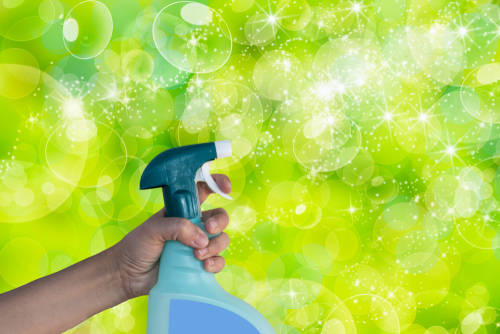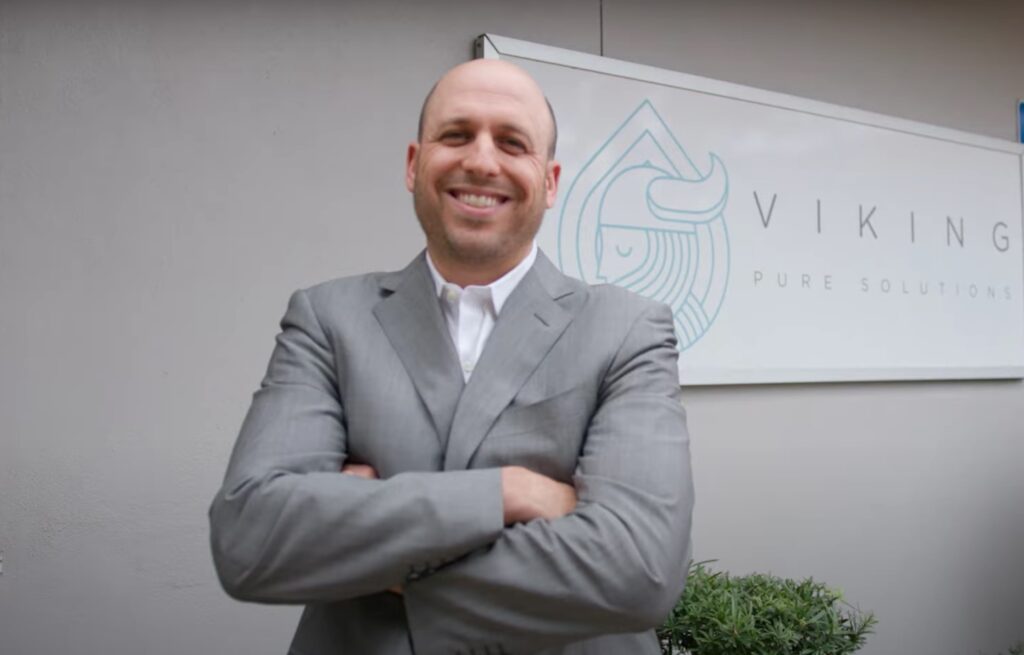As the health risks associated with conventional cleaners and disinfectants become more widely known, businesses are increasingly looking to protect their customers and employees by searching out sustainable alternatives.

That’s a sound instinct, but what does it really mean to get a green clean? That question turns out to be more complicated than it might appear. Here are some pitfalls to avoid if you want to turn good intentions into results.
Look Out for Greenwashing
The fundamental challenge is that terms like “green,” “eco-friendly,” “natural,” and “sustainable” are vague, non-technical, and endlessly flexible in the hands of savvy marketers. With no agreed upon definitions—much less regulatory enforcement—what’s known as “greenwashing” is becoming rampant.
If a cleaning product contains volatile organic compounds (VOCs)—connected to cancer, kidney damage, endocrine and immune disruption, and more—but is sold in packaging made with comparatively less plastic, is it “eco-friendly?”
For the purposes of branding, sure.
What if it uses plant-based extracts that have been classified as “established allergens” by the European Commission?
There’s nothing to stop it from being marketed as “natural.”
Don’t Mistake Natural for Non-toxic
As these examples suggest, natural is not the same thing as healthy or non-toxic. In fact, one study showed that 80% of the most common VOCs were often found in both regular products and those with green marketing. Another found that every product labeled “natural,” “non-toxic,” or “organic” released one or more chemicals that can be toxic.
To cut through the noise, it helps to look for products that have been validated by trustworthy third parties, such as Green Seal or other organizations.
But ultimately, there is no substitute for independent research. Products that throw up obstacles to that research by not listing ingredients should make your greenwashing alarm bells go off. The best cleaners and disinfectants have nothing to hide.
Avoid Fragrances
Speaking of hiding, one of the most common tricks to conceal harmful chemicals is to use what might be called “the fragrance loophole.”
Fragrance recipes brim with harsh chemicals like phthalates, an endocrine disruptor associated with infertility, birth defects, and heart disease. But because fragrances qualify as “trade secrets” under federal law, companies don’t have to disclose them. Research has found that the overwhelming majority of toxic chemicals aren’t listed on labels—green or otherwise.
As a result, the average consumer or procurement professional has no way to know what chemicals a fragranced product might contain, much less how they interact with each other. According to the International Fragrance Association, its members’ fragrances include more than 3,100 different ingredients, none of which are tested by federal regulators before going to market.
While many associate cleanliness with a certain scent—such as citrus or rose—the truth is that clean doesn’t have a smell. Toxic chemicals, on the other hand, usually do.
The takeaway? Simply avoid fragrances altogether.
Don’t Overlook Emerging Technologies
When people think of innovation, cleaning and disinfection aren’t the first things that come to mind. But maybe they should.
An inherent tradeoff between potency and healthfulness has long been the reigning paradigm in the industry: the more effective a given product is against pathogens, the more damaging it will be to human health, and vice versa. Take your pick.
Fortunately, new technologies are upending this status quo. Take electrolyzed water, which commercial facilities can create on-site using specialized machines that induce a simple electrochemical reaction involving just salt and water. The two products of that reaction are sodium hydroxide and hypochlorous acid.
The first is a natural, multipurpose, heavy-duty cleaner and degreaser; the second is a hospital-grade disinfectant that’s 80-120 times stronger than bleach, yet completely harmless to people and the environment.
Of course, electrolyzed water is just one example. For those entering this surprisingly bewildering world for the first time, these exciting innovations offer hope that sustainable cleaning can be more than greenwashing, marketing tricks, and impossible choices between health and cleanliness. And it’s about time.

Joshua Schwartz is president and co-founder of Viking Pure Solutions. He is also an an active developer of medical real estate and supportive housing. Prior to Viking Pure, Schwartz was the president of an Article 28 diagnostic and treatment center.
Editor’s note: The views expressed in this article are the author’s and do not necessarily reflect those of Facilities Management Advisor.
